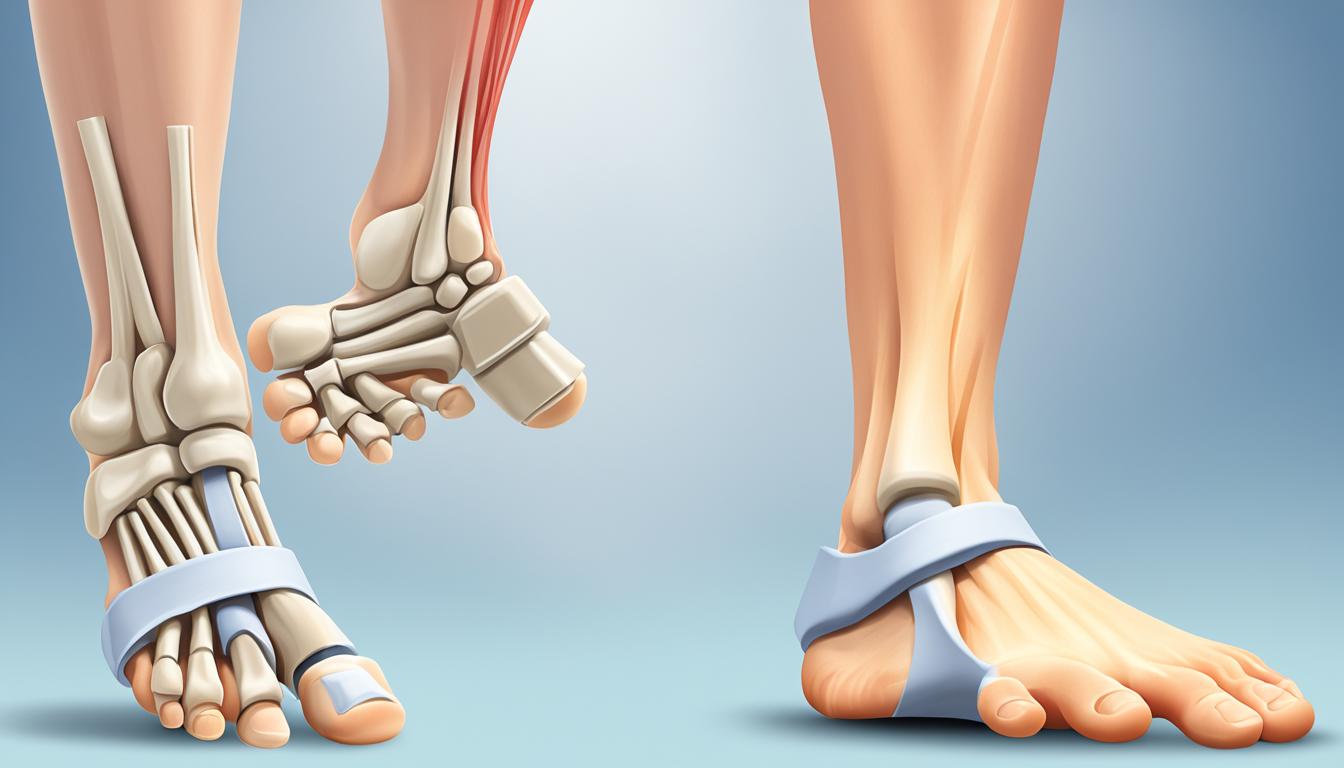Hammertoe and mallet toe are common foot problems. They make the toes bend downward like a hammer or a mallet. This can cause pain and make wearing some shoes hard.
Wearing tight or high-heeled shoes is a big cause. Such shoes push the toes down. But injury, how your toes are shaped, your age, and other health issues can also matter.
If you might get hammertoe, knowing the signs and getting help early is key. You might feel your toes are stiff or hurt when you wear shoes. Also, you can get corns or calluses on your toes. Seeing a foot doctor early can stop the problem from getting worse and make your feet healthier.
Stem cell therapy is a new way to treat hammertoe and mallet toe. Experts believe stem cells can heal the toes without surgery, which is good news for people with bad cases. But we still need more studies to know for sure if it works.
Key Takeaways:
- Hammertoe and mallet toe make the toes bend down, like a hammer or a mallet.
- Poorly fitting shoes, injury, and other factors can cause these problems.
- Symptoms include stiff toes, shoe pain, and corns or calluses.
- Early treatment by a foot doctor can stop things from getting worse.
- Stem cell therapy is a hopeful option, but it needs more study.
Symptoms and Complications of Hammertoe and Mallet Toe
Hammertoe and mallet toe are foot problems that can hurt and cause discomfort. Knowing the signs and possible issues is key to early and successful treatment.
Common Symptoms
At first, mallet toe shows up as slight toe stiffness and pain. The problem gets worse, you might see:
- Persistent toe pain and discomfort
- Corn or callus formation on the raised portion of the toe
- Rubbing and friction against shoes, resulting in blisters
- Reduced flexibility and range of motion in the affected toe
- Swollen and inflamed toe joints
- Hard to find shoes that fit well
If not taken care of, hammertoe and mallet toe can cause more problems.
Possible Complications
Not treating and ignoring signs can lead to serious issues:
- Development of corns, calluses, and painful foot ulcers
- Bursitis, an inflammation of the small sacs that cushion joints
- Toe joint deformities and stiffness
- Overlapping or underlapping toes
- Problems walking and balancing
It’s very important to see a qualified podiatrist or foot doctor. They can advise on treatments to avoid bigger problems.
Treatment Options
The type of treatment depends on how bad the foot is:
- Non-surgical remedies: This includes wearing comfy shoes with a wide enough toe box. Also, using devices to realign toes and special exercises to make the toes stronger and more flexible.
- Surgical options: If simple treatments don’t work, surgery might be needed. Surgery options include fixing tendons, removing parts of joints, or fusing joints to fix the toe shape and function.
Discuss with your podiatrist to figure out the best plan for your symptoms and how they affect your life.
Age, Genetics, and Other Foot Problems Related to Hammertoe and Mallet Toe
Getting older and genetics both play a big role in hammertoe and mallet toe issues. Our feet change as we grow older. The ligaments and tendons might weaken, causing problems in the feet. This can make you more likely to get hammertoe and mallet toe.
Your family history can affect your chances too. If people in your family have had these foot issues, you might get them too. This shows how important genes are in health.
Ignoring hammertoe and mallet toe can cause more foot problems later. You might get painful corns or calluses, or toes that overlap. It’s key to treat these conditions early to avoid such issues.
Caring for your feet well is the best way to prevent these problems. Wear shoes that fit properly and give your toes room to wiggle. Avoid high heels and tight shoes. Staying active and looking for help the moment you spot a foot problem can keep hammertoe and mallet toe away.

